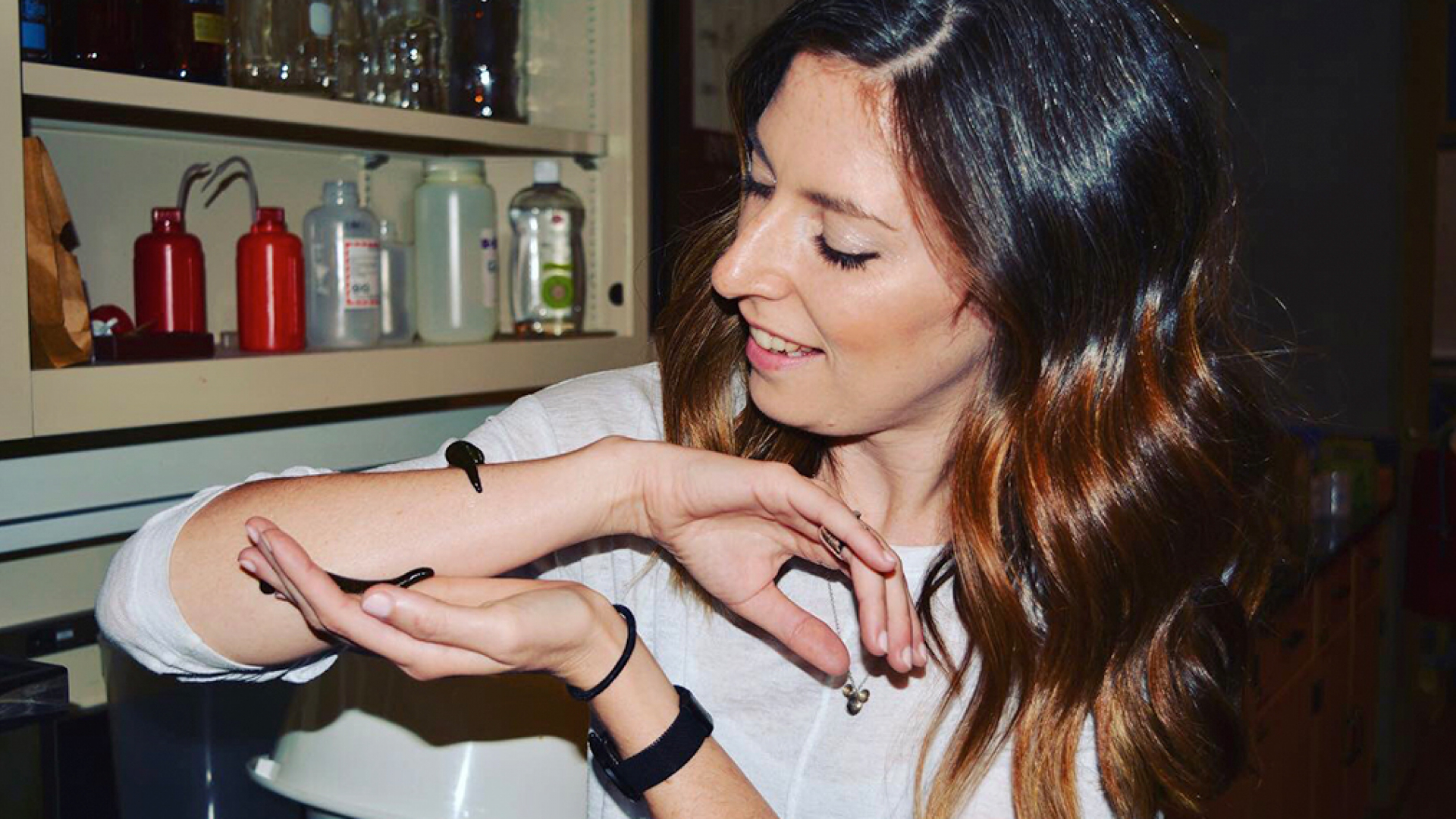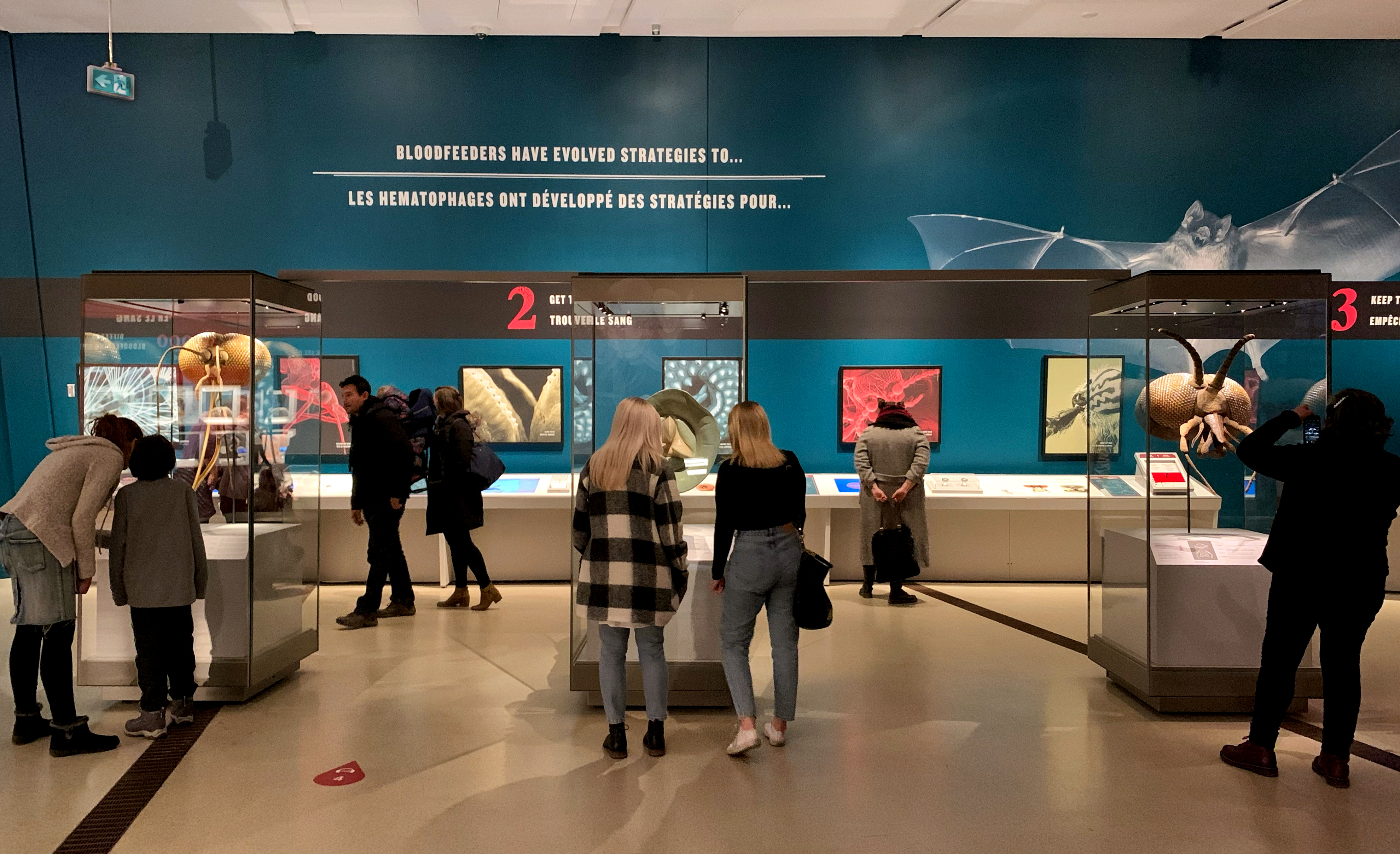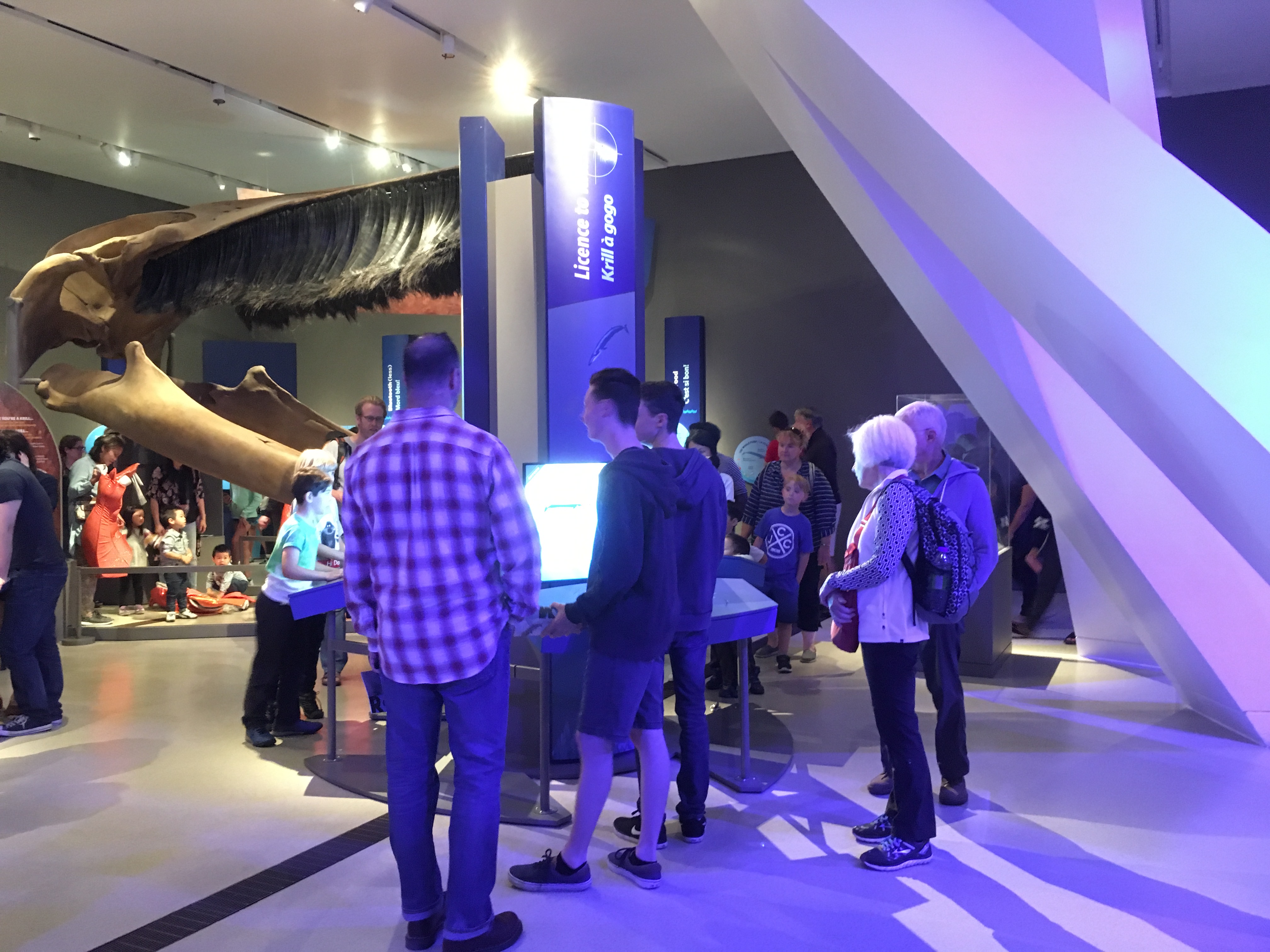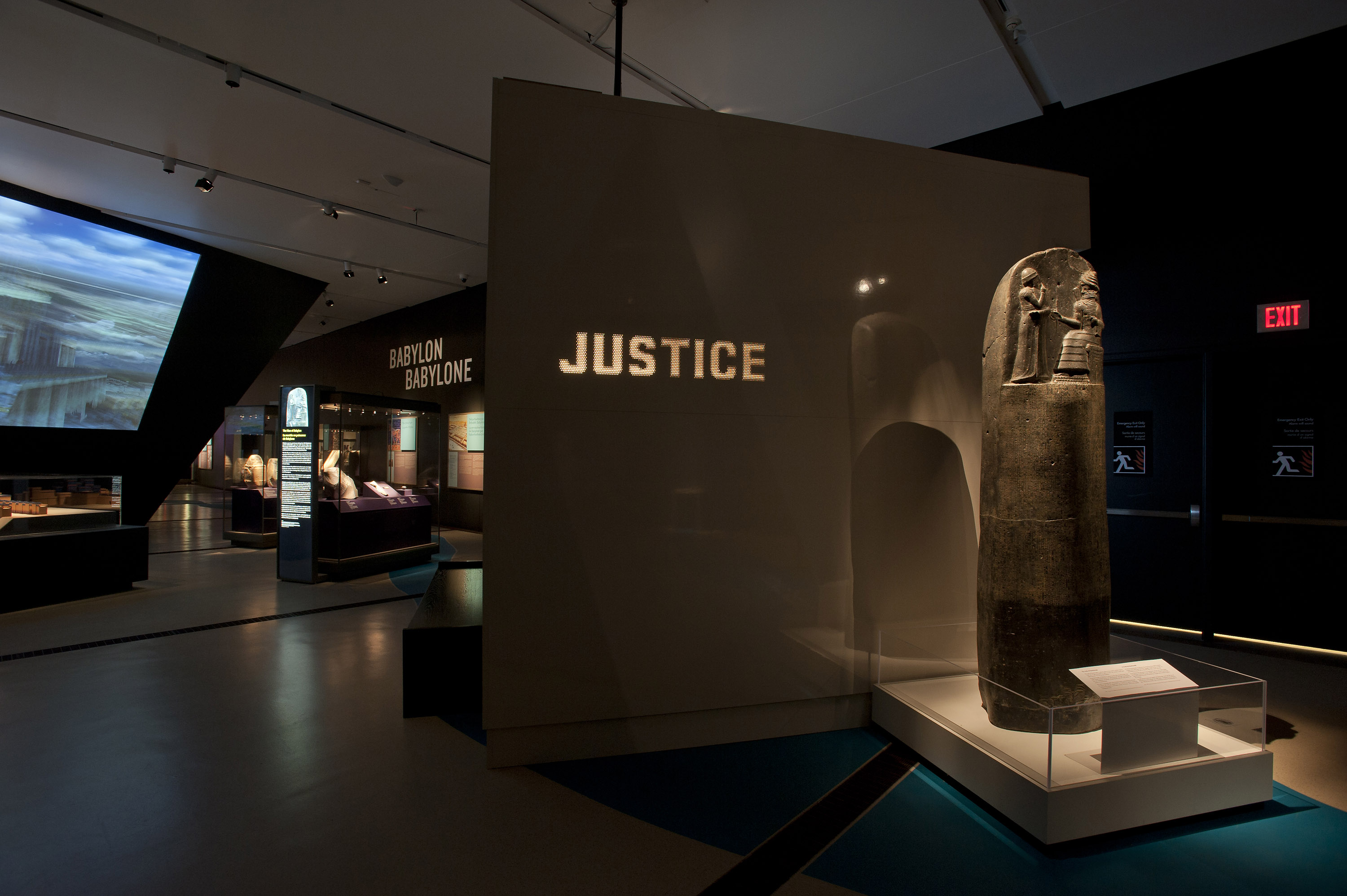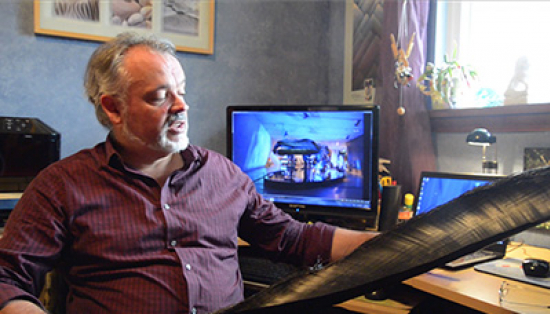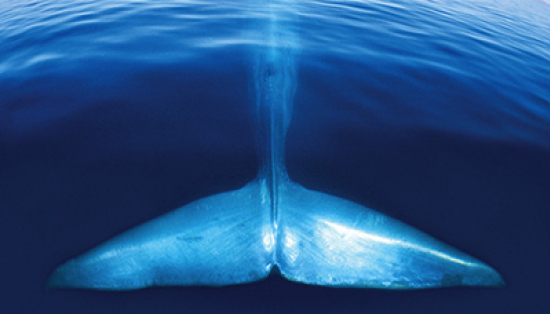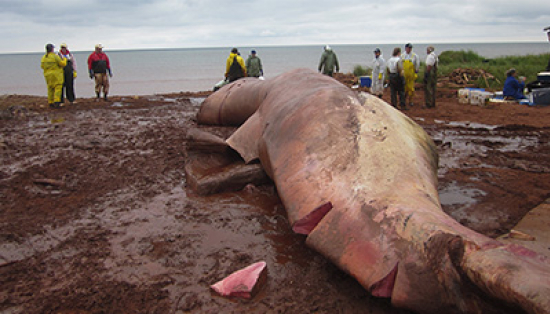Every Thursday at 10 am on Instagram we chat with a different ROM expert ready to answer your burning questions on a different subject. This time on Ask ROM Anything we are talking to Courtney Murfin, an Interpretive Planner at the Royal Ontario Museum. She works on exhibitions to help develop the storyline, content, and experiences that will engage visitors.
Courtney started as a volunteer in the ROM’s hands-on galleries, before getting a job with the Exhibition team. She has since helped develop over a dozen landmark exhibitions and presented at international conferences, but her favourite part of the job is seeing visitors interact with the ROM's exhibits.
As an Interpretive Planner, she must learn about new topics for every exhibition she works on--so far, that includes the Forbidden City, new dinosaurs (like Zuul!), tattoos, whales, and most recently, Bloodsuckers!
Q. What happens to a major exhibition when it closes.
A. A lot of exhibits travel to other museums! It’s really great because we get to share our expertise around the world and more people get to experience the topic and interactives. Our latest exhibition, Bloodsuckers, is going to travel internationally! We also borrow exhibits from other museums – like Spiders, which was developed in Australia.
Q. When planning an exhibit, what is the primary audience you intend it for?
A. That depends… the ROM is so lucky to have a very diverse audience from all of Toronto’s communities—not to mention tourists! Each exhibit might be more appealing to a certain age group, visitor type, or community. But the best exhibits are the ones that have a bit of something for everyone, and bring those different groups together—that’s what we aim for!
It was really cool to see visitors from every generation and different walks of life all lining up together to play the License to Krill game in Out of the Depths: The Blue Whale Story! #krilledit
Q. What is your educational background? This seems like a very exciting career!
A. Thank you! I agree!! I’ve always had an interest in ancient civilizations and the puzzles in history. That’s what I studied for my undergraduate degree, before doing a Masters of Museum Studies at U of T. After a summer internship at the ROM in Exhibition Development, I was hooked!
Figuring out how to tell compelling stories and create engaging experiences is very much like a puzzle. I love that part of the job, and I’m a bit of a nerd, so it’s super fun to be constantly learning new topics!
Q. Do you have to be a designer to create an exhibition?
A. No! I have zero design background (or skills… just ask our actual design team ?). Exhibit development teams are pretty big actually, and include designers, curators, interpretive planners, media developers, project managers, conservators, and so much more! We all work together from our individual expertise to bring all the different aspects of an exhibit to fruition.
Interpretive Planners outline the storyline and engagement vehicles for an exhibit topic, and then we work with exhibit designers and media developers who manifest the ideas into real, dimensional form. The curators are with us the whole time to make sure the content is integrated, and the project manager keeps us all on track. There are lots of options if you’re interested!
Q. How has your thinking about exhibition development changed post-pandemic?
A. Such a good and important question! As an interpretive planner, my main responsibly is to the visitor – to anticipate what will engage them, and how they will feel. That includes feelings of safety in our current situation.
The biggest change for us is around interactives, because we’ve entered a no-touch world. After decades of advocating for museum exhibits to be more interactive and hands-on, this is a HUGE shift. But all it means is that we must be more creative in how we engage visitors with other senses. For the exhibit we’re working on now, we’re looking at motion activation for some interactives, immersive audio experiences, and things like ‘search and finds’ to offer different types of experiences for visitors. You might even start smelling more things at the museum soon…
Q. What has been your favourite exhibit to work on?
A. The blue whale exhibit, Out of the Depths, was definitely my favourite. Partly because we tried a lot of new strategies in the exhibit to engage visitors, including putting jokes on our labels (a personal dream of mine)! But mostly, it was because of the whale herself, who we named Blue. It’s really rare at the ROM, and in museums in general, to work with an object that feels alive. But Blue had a personality, and a meaningful story to tell – and I got to be part of the team that told it to the world. Everyone who met her, loved her, including all the people who visited the exhibit!
Bloodsuckers is a close second – how often will you get the chance to tell the history of vampires in a museum exhibit? Or let a leech feed on you to better understand their world? So cool.
Q. What would be your dream exhibition to be a part of and why?
A. Oh dear… this one is hard! I’ve always said I want to do another blue whale exhibit – which is happening next year, so that one came true! I also really love experimenting with labels in exhibits and how to make them surprisingly cool. One of my coworkers and I have talked about a secret dream to do an exhibit about reproduction in nature (even plants!) and write the labels like a romance novel.
More realistically, and going in a whole different direction, right now museums are talking a lot about challenging the colonialism of museums and I’d love to see an exhibit that offers an introspective look at our own history and legacies, with opportunities for visitors to contribute their own feelings and ideas.
Q. What advice do you have for someone interested in working in museums?
A. There are so many jobs in museums – more than I ever knew about before I started working in one! Check out all the options. Start volunteering in different departments to see what you like and what you don’t. Once you have your foot in the door, it can be much easier to get a job at an institution.
Museum Studies programs are a great way to get started too. They’re becoming much more popular and there are quite a variety around the world and in Toronto.
Mostly, be patient and do what you can to get experience. People who work in museums tend to love working in museums, so we stick around for awhile.
Q. How do you develop and idea into an exhibit?
A. Ideas for exhibits can come from anywhere. At the ROM, they are typically submitted by curators based on their research and the highlights in our collections. The first step is to test the ideas with the public – we want to know what YOU want to see!
The winning ideas are then fleshed out with an interpretive planner and others, to identify what the story might be around the topic. For example, we hosted an exhibit from the British Museum about Mesopotamia a few years ago. When thinking about the angle for the story, it could have been a timeline of Mesopotamian history, or a series of themes about their religion, royalty, daily life, etc. Instead, the story focused on the innovations from Mesopotamia that characterize it as the first civilization and how those innovations have evolved today. Each section began with a profile of a tablet, or beer, or some way to represent the concept of government, and then expanded to show visitors the objects and evidence from Mesopotamian history. The angle was adapted into the marketing campaign and programming so that every experience with the exhibit told the same story for visitors.
Q. What’s the most challenging part of your job?
A. Learning complex scientific ideas or long cultural histories is always something that takes some time to wrap my head around. What’s even harder is then figuring out how to make sense of it for so many other people through interesting, interactive ways. I probably spend the most time during any project trying to distill pages of information into as few words as possible for visitors to read in the exhibit labels. But honestly, that’s also my favourite part. I try to pretend I’m talking right to you all, giving you the elevator-pitch about how blackflies bite or the meaning behind tattooing traditions. It’s fun to tell a huge story in a single paragraph and be creative with the language so that it actually sounds like we’re having a conversation, while making sure (with lots of help from curators) that the information is correct. I also share my drafts with family and friends so they can tell me how to make them better!

